Taste on Wheels: Driving Watson's Vitrine Displays

Watson Library is currently exhibiting a vibrant selection of automobile trade catalogs from the early 1900s through the 1950s
«Every six weeks or so, Watson Library puts out a new vitrine display that highlights some of the strikingly beautiful works from our special collections. In this post we'll take you behind the scenes to see the planning of these vitrine installations—from the early stages of identifying materials and a theme, to the final stages of constructing book supports, securing the objects, and drafting the labels.»
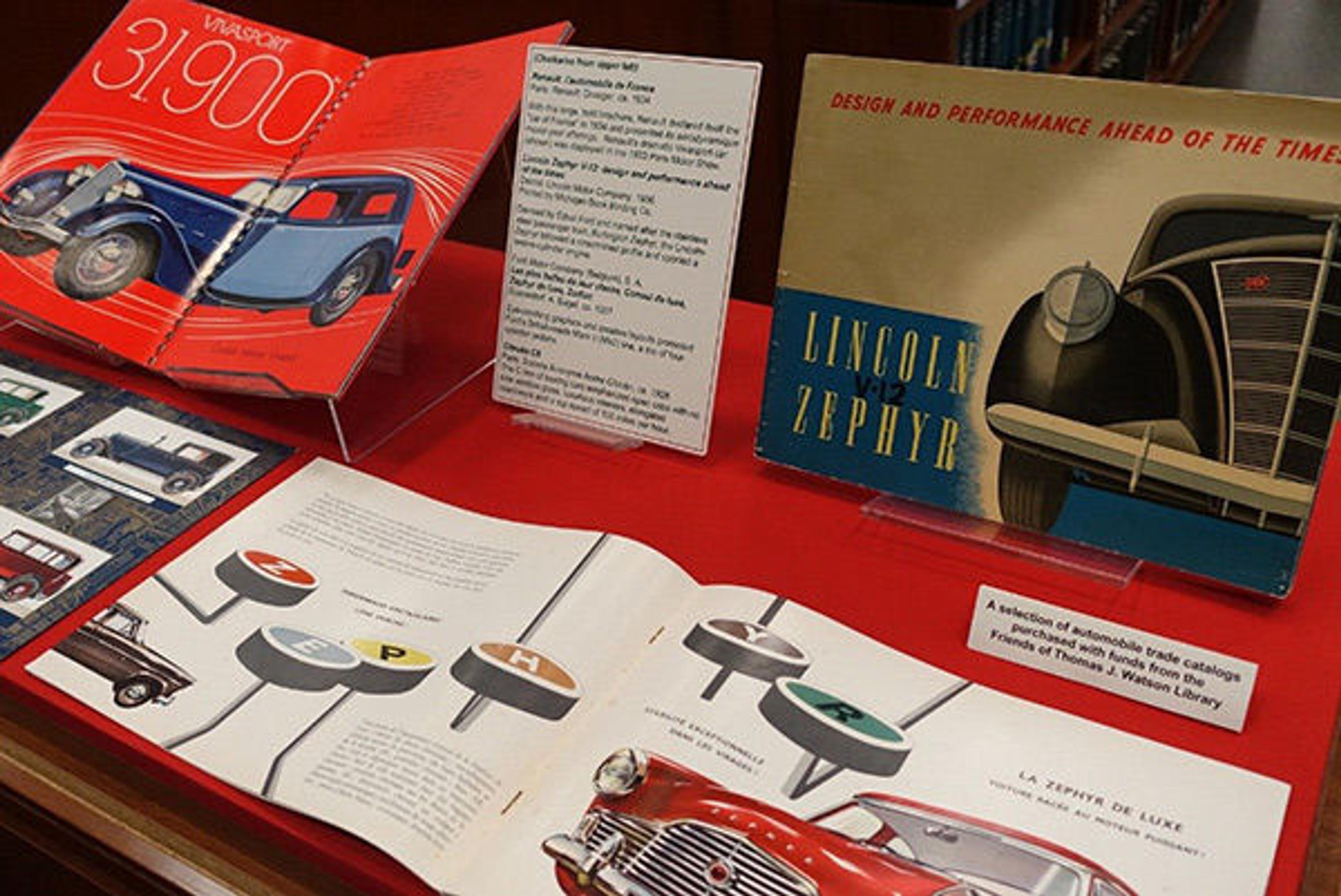
Notable models featured in these works include the Citroën C6 (1926), Renault Vivasport (1933), and Lincoln Zephyr (1957)
How Are Books Selected?
The books displayed in Watson are recent acquisitions purchased with funds provided by the Friends of Thomas J. Watson Library. It is with gratitude to the Friends group that the library is able to purchase a broad selection of rare books, including scarce exhibition and auction catalogs, travel guides, trade catalogs, treatises, manuscript facsimiles, and rare monographs.
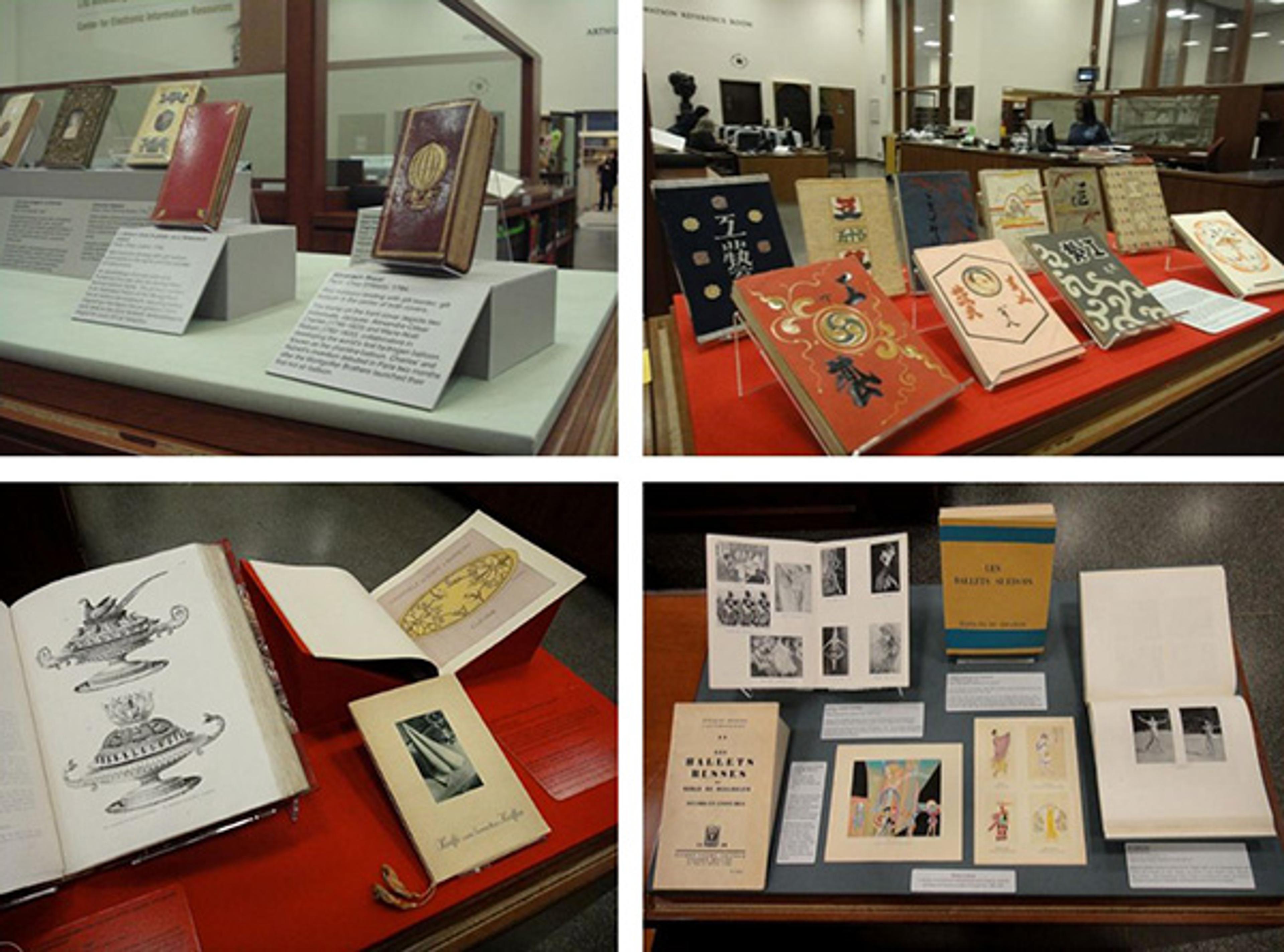
Four recent vitrine displays highlight some of the more visually striking aspects of our special collections
In order to create a cohesive display, we identity a theme such as fine bindings, avant-garde periodicals, trade catalogs, or theater and dance, as pictured above. Specifically, moving clockwise from upper left, the above four displays featured miniature fine bindings from the eighteenth and nineteenth century; a modern decorative Japanese periodical, Kogei (1931–1951); a festive layout of culinary trade catalogs, including one on gastronomy and another on napkin folding; and an animated display of books on modern dance and ballet.
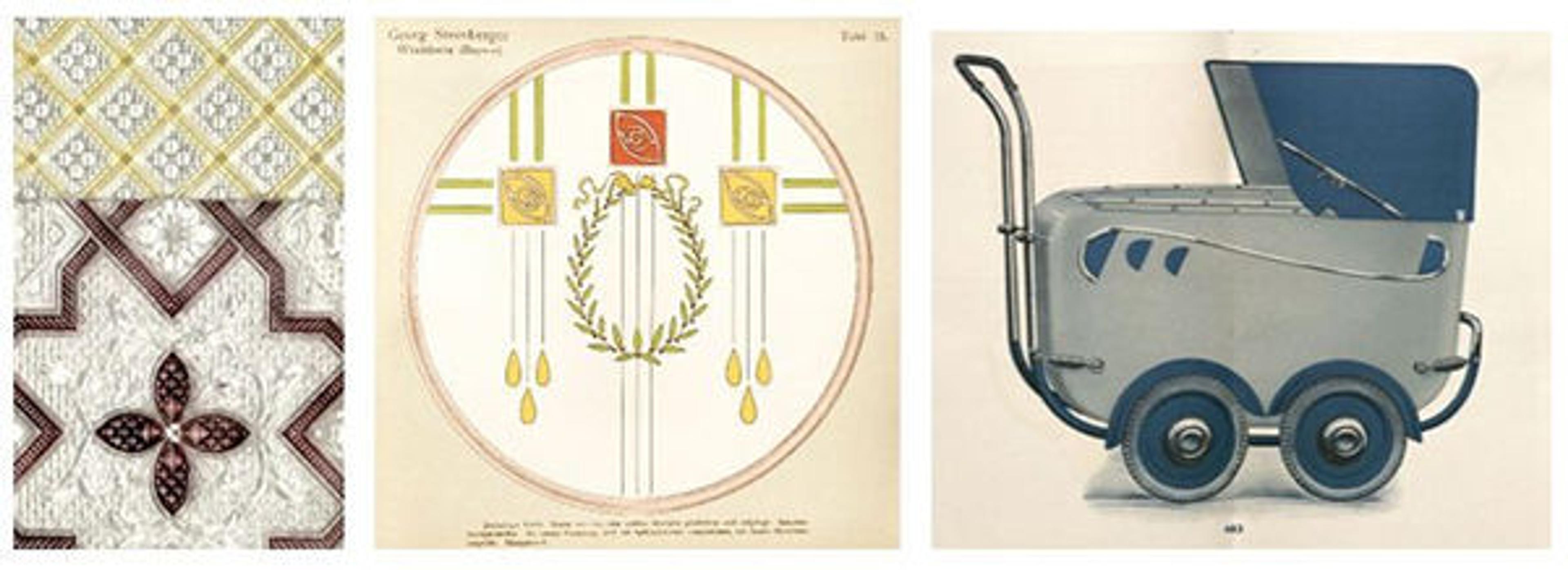
Three recent vitrine displays
Other recent displays include a late nineteenth-century trade catalog with actual glass samples from the factory of St. Gobain, Paris (above left); Art Nouveau cake design (above center); and a selection of transportation-related works, including cruise ship brochures and, most memorably, an artfully designed Art Deco baby carriage (above right).
In addition to identifying a theme, we often select materials that are directly about artwork or books that reflect the aesthetics of a particular art period. For example, the automobile catalogs featured in a recent display echo art movements at that time, which can be seen in the curvilinear Renault Vivasport with its Streamline Moderne style related to the Art Deco period (seen at the top of this post).

Left: Collection Development Librarian Ross Day and Associate Manager for Acquisitions Holly Phillips look through potential vitrine display books. Right: More books to choose from!
Seen above, Collection Development Librarian Ross Day and Associate Manager for Acquisitions Holly Phillips review the broad range of car catalogs recently purchased with Friends funds. Making final selections for the display was an exciting, if difficult to narrow down, process.
How Are Books Displayed?
Once titles have been selected, the next step is designing the vitrine's layout. In addition to presenting a lively, visually appealing display, we ensure that the books lie comfortably inside the vitrines on solid supports.
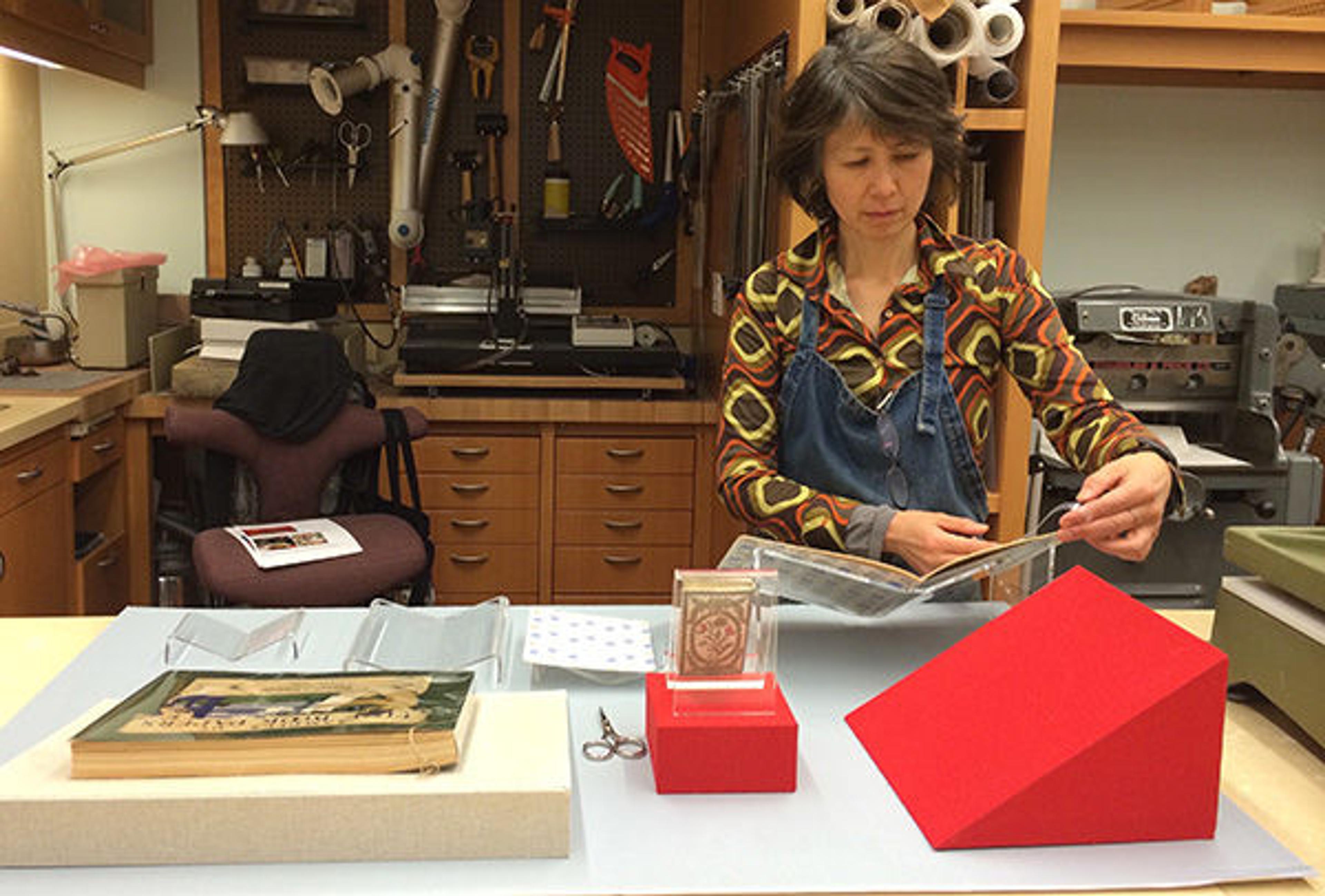
Senior Book Conservation Coordinator Yukari Hayashida finds the appropriate supports for the books
In the above photo, Senior Book Conservation Coordinator Yukari Hayashida displays different-sized book supports of two major kinds: cloth-built models and plexi. She uses clear, acid-free tape to hold open the page for displays. Spine support covering the full length of the book is critical. For the car display, Yukari selected a large plexi support for the quarto-sized trade catalog, wide enough to support its length while being clear, which allows the viewer to see the back covers.
How Are Labels Produced?
Another stage of the display process is writing descriptions that describe each book's content, as well as any unusual binding design or cover constructs.
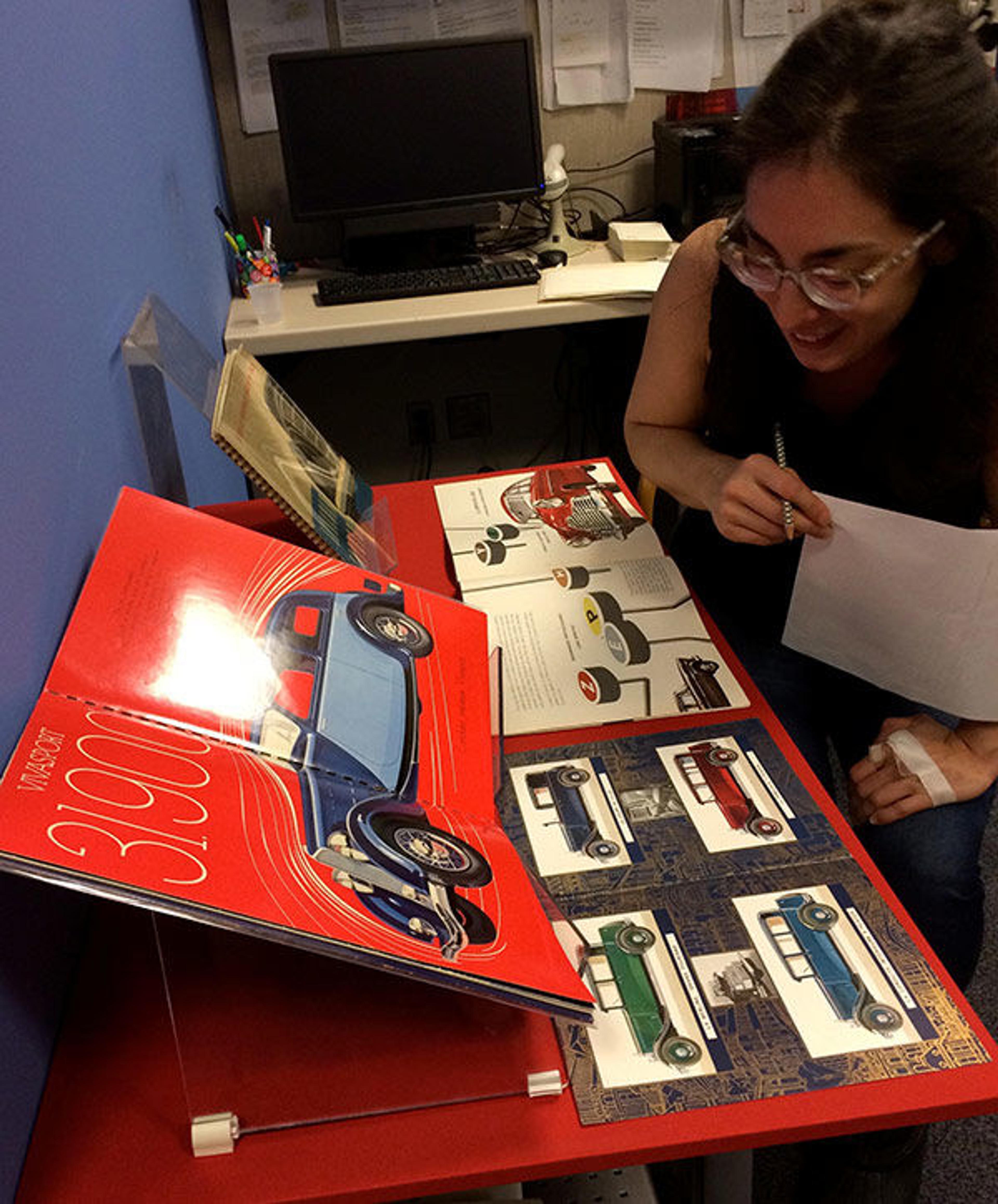
Acquisitions Volunteer Diane De Fazio researches for the label content
Above you can see Diane De Fazio, acquisitions volunteer, as she studies the items to be displayed. She also examines how the catalog is constructed and its distinctive printing aspects. Diane researches each book's bibliographic content as well as its art-historical and cultural relevancy before writing each label.
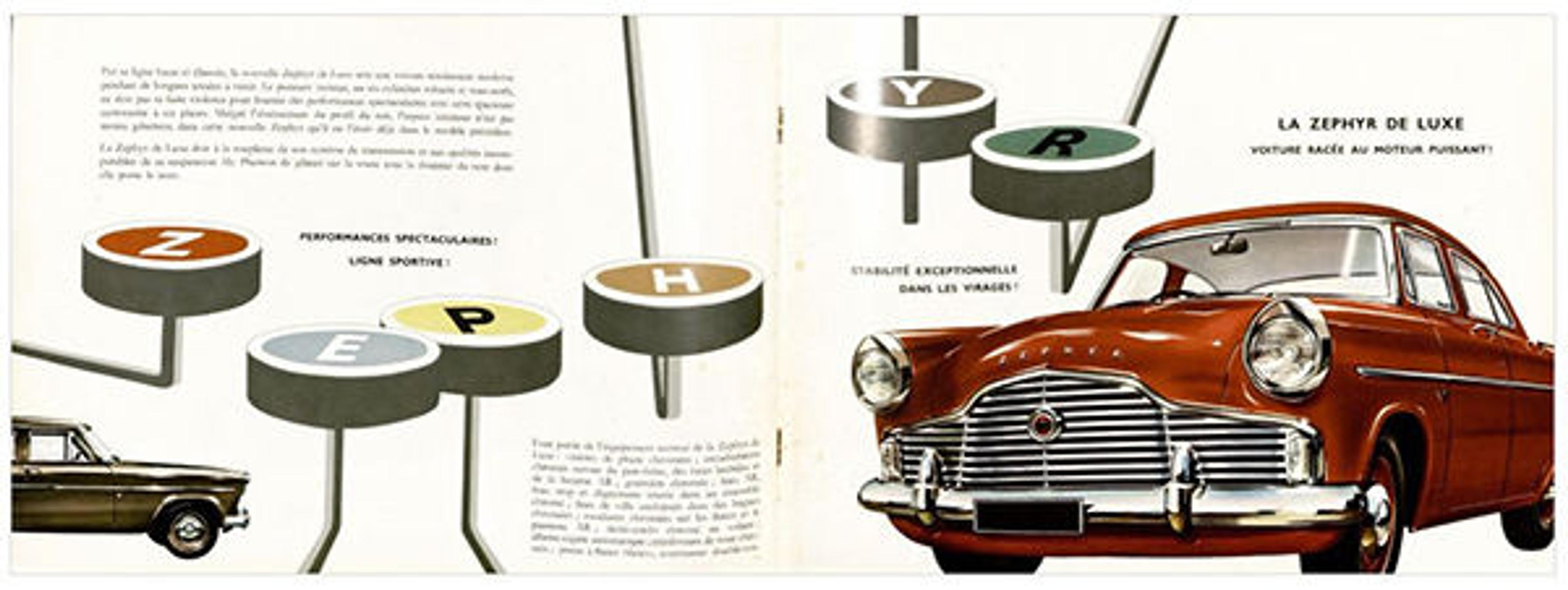
"La Zephyr De Luxe"
The car trade catalogs are valuable and relevant to art-historical research not only for the craftsmanship and artistry of the models presented but also for their innovative printing techniques. For example, the eye-catching graphics and creative layouts of the Ford Motor Company's brochure Les plus belles de leur classe, Consul de luxe, Zephyr de luxe, Zodiac (1957) recall the quintessential bright, bold graphics of 1950s Madison Avenue advertising design.
In addition to studying the book in hand, we research the history of the book, the author, and the topic in order to draft a concise, informative text label.
The final stages of the process is printing labels and mounting them on museum board. This involves making decisions about background and text color to coordinate with the display.

Sample vitrine label
For the car display, we used a neutral color for the background with a red border to complement the bright colors in the vitrine, as illustrated above by a label we used for a recent Art Deco architecture display. With this particular label, since we were displaying the book's pages, we included an image of the book's cover on the label to give the viewer an idea of the book's attractive wrappers.
To view past library displays, see Watson Library's Flickr page.
Holly Phillips
Holly Phillips is the collections manager for acquisitions in Thomas J. Watson Library.